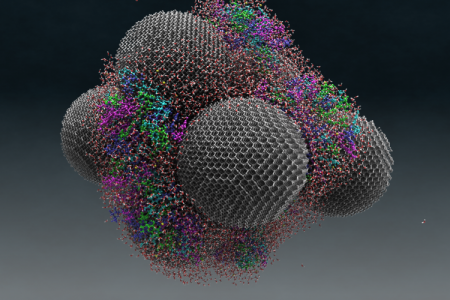
The Pegasus team is very happy to hear about the cutting-edge research and development that can help solve some of the challenges associated with drug delivery discovery: “The motions of a tRNA (or transfer RNA) model system can be enhanced when coupled with nanodiamonds, or diamond nanoparticles approximately 5 to 10 nanometers in size”
Diamonds that deliver!
Neutrons, simulation analysis of tRNA-nanodiamond combo could transform drug delivery design principles.
A unique combination of experimentation and simulation was used to shed light on the design principles for improved delivery of RNA drugs, which are promising candidates in the treatment of a number of medical conditions including cancers and genetic disorders.
Nanodiamonds are good delivery candidates due to their spherical shape, biocompatibility and low toxicity. And because their surfaces can be easily tailored to facilitate the attachment of various medicinal molecules, nanodiamonds have tremendous potential for the delivery of a vast range of therapies.
The discovery involved ORNL’s Spallation Neutron Source, which provides the most intense pulsed neutron beams in the world for scientific research and industrial development, and ORNL’s Titan supercomputer, the nation’s most powerful for open science. By comparing the SNS neutron scattering data with the data from the team’s molecular dynamics simulations on Titan, the researchers have confirmed that nanodiamonds enhance the dynamics of tRNA when in the presence of water; This analysis was performed with the Pegasus WMS.
The DOE Panorama project has developed an SNS workflow to confirm that nanodiamonds enhance the dynamics of tRNA in presence of water. The workflow, enacted by the Pegasus Workflow Management System, calculates the epsilon that best matches experimental data. These calculations were for 10 ns each and the workflows used almost 400,000 CPU hours of time on DOE leadership class systems.
The Panorama project delivers workflow management capabilities, models the end-to-end performance of the workflows on a variety of computational platforms, provides monitoring capabilities for the workflows and the computational infrastructure at runtime, and detects anomalies in the execution when application performance drops below expectations
(Funding Acknowledgements: DOE DE-SC0012636)
Read the full press release @ORNL...
Additional Information:
5,497 views